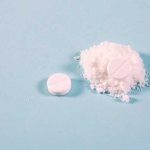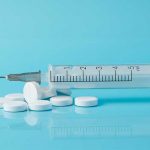How Long Does Oxycodone Stay in Your System?
- Half-Life Of Oxycodone
- Drug Tests & Detection Times
- Urine Tests (1-3 days)
- Blood Tests (24-48 hours)
- Saliva Tests (up to 48 hours)
- Hair Tests (3 months)
Oxycodone, the active ingredient in the brand name prescription drug Oxycontin, is one of the most widely abused prescription painkillers. If you or a loved one struggles with substance abuse, you may be concerned about the amount of time it takes oxycodone to leave your system.
Oxycodone stays in your system for about 15-30 hours, depending on the strength of the drug. However, oxycodone and its metabolites can be detectable in blood for 24 hours, saliva for 2 days, urine for 3 days, and hair for 90 days.
Half-Life Of Oxycodone
A drug’s half-life refers to the time it takes the blood concentration of a drug to reduce by half the amount. A drug has about five half-lives before it is almost completely eliminated from your system.
The half life of immediate-release oxycodone is about 3 hours, which means it takes about 15 hours to be eliminated. The half life of extended-release oxycodone is 4-6 hours, which means it takes 20-30 hours for it to be metabolized.
During this process, the liver processes oxycodone into metabolites. The two major metabolites created from oxycodone are noroxymorphone and noroxycodone. These metabolites can be detected on drug screens long after oxycodone is out of your system.
Oxycodone Drug Tests & Detection Times
Opioid painkillers work by attaching to opioid receptors in the central nervous system and blocking pain signals.
Other prescription opioids include:
- Vicodin (hydrocodone/acetaminophen)
- Percocet (oxycodone/acetaminophen)
- morphine
- codeine
While opioid receptors are activated, they provide pain relief and may cause other side-effects. Once the effects of oxycodone have worn off, the drug is metabolized primarily by your liver.
The half-life of oxycodone may help you determine how long it takes your liver to process the drug. However, elimination times are estimates and several factors can affect oxycodone metabolism.
These factors include:
- how much you use oxycodone
- when you last used oxycodone
- how you take it (ingestion, intranasal, intravenous)
- body composition
- your metabolic rate
- if you take other medications that may interact with oxycodone
Urine Tests (1-3 days)
Urine tests are one of the most common and cost-effective ways to screen for opioid use. They can detect the drug and its metabolites within the first 24 hours after last use and up to 3 days.
Blood Tests (24-48 hours)
Blood and saliva tests are reliable but do not have a long detection window. It takes oxycodone up to 30 hours to completely metabolize in your body. This means it can be detectable through a blood test for up to 2 days after your last dose of oxycodone.
Saliva Tests (up to 48 hours)
Saliva tests, also called a mouth swab, collect a fluid sample from inside your cheek. A mouth swab can detect oxycodone within minutes and up to 2 days following the last use.
Hair Tests (3 months)
A hair follicle test is one of the least invasive types of drug screenings and offers the longest detection window. Oxycodone may be detectable in hair for up to 90 days after the last use.
Oxycodone Addiction Treatment
Oxycodone is used to help people manage severe pain but it is a schedule II controlled substance in the United States. Controlled substances have a high potential for abuse and addiction, also known as a substance use disorder (SUD).
If you are worried about getting oxycodone out of your system, professional treatment centers can help. Depending on your individual needs, treatment options may include:
Detox
If you are dependent or addicted, a medical detox program can help ease difficult withdrawal symptoms. During detox, your symptoms are monitored and you may be given medications like buprenorphine or methadone.
These medications are FDA-approved drugs that can reduce opioid cravings and help you remain abstinent.
Residential Treatment
Once you complete a detox program, you can begin an inpatient drug rehab program, also known as residential treatment. You will have access to a wide range of therapeutic services for addiction and co-occurring mental health disorders.
Outpatient Treatment
An outpatient rehab program offers the flexibility of living at home while traveling to scheduled treatment sessions. Most outpatient programs offer a variety of treatment services, including family therapy, group therapy, individual counseling, and support groups.
To learn more about our opioid abuse treatment programs, please reach out to us today.
Sources
- Mayo Clinic Proceedings — Opioid Metabolism
- National Library of Medicine: MedlinePlus — Opioid Testing
- National Library Of Medicine: PubMed — Forensic Drug Testing For Opiates. VI. Urine Testing For Hydromorphone, Hydrocodone, Oxymorphone, And Oxycodone With Commercial Opiate Immunoassays And Gas Chromatography-Mass Spectrometry
- Nebraska Judicial Branch — Laboratory Testing Reference Guide
Written by
Northeast Addition Editorial Team
©2024 Northeast Addition Center | All Rights Reserved
This page does not provide medical advice.




